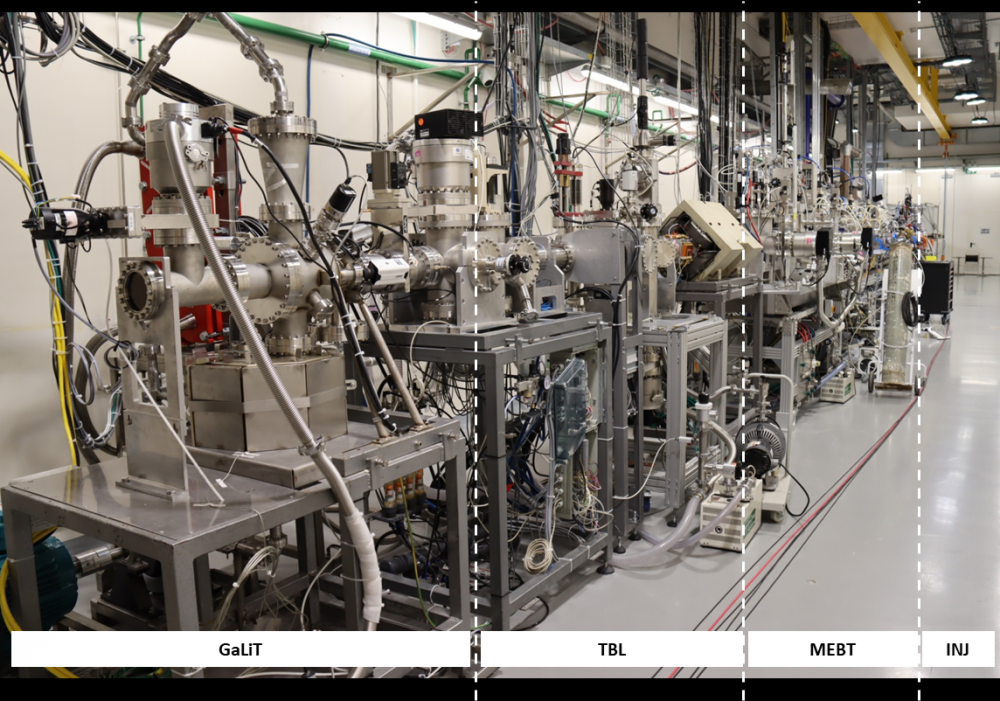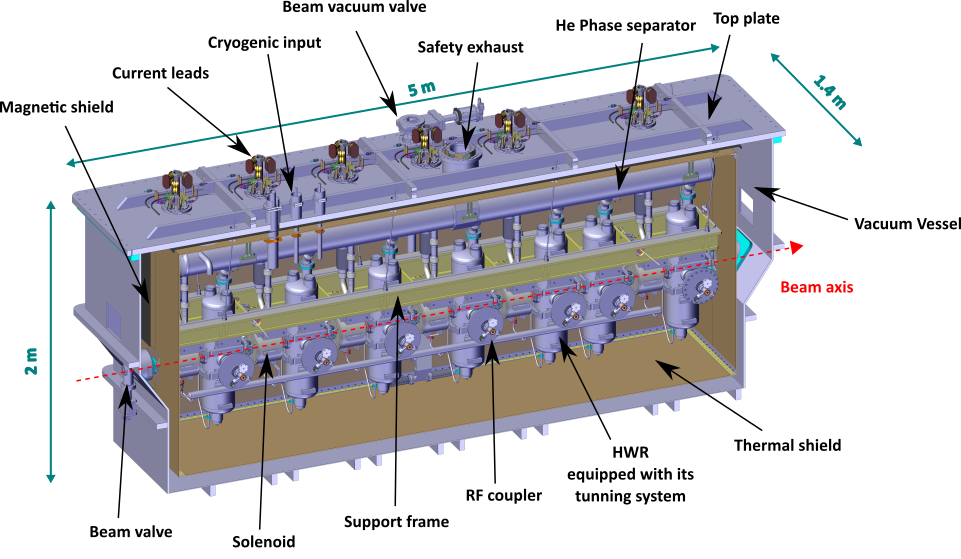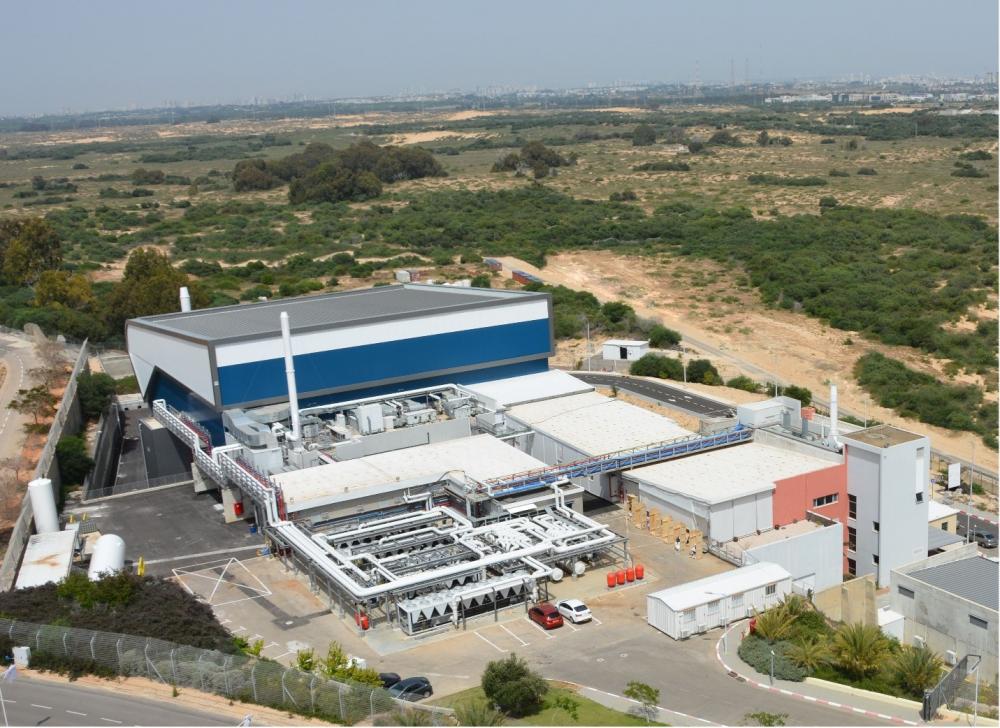Thanks to the expertise developed by the CEA during the SPIRAL2 and IFMIF projects, in 2014 the CEA signed a contract with the Soreq Nuclear Research Centre (SNRC, Israel) to build a superconducting linear accelerator called SARAF (Soreq Applied Research Accelerator Facility). The aim is to build an accelerator capable of delivering proton and deuteron beams with energies ranging from 5 to 40 MeV and intensities of up to 5 mA. This equipment will be an important tool for fundamental research, particularly in nuclear physics, the characterisation of materials using neutrons and the production of medical radioisotopes. The CEA is responsible for the design, manufacturing and qualification of 5 sub-assemblies: the MEBT and the 4 cryomodules of the linear accelerator. In 2023, the CEA qualified the MEBT, which was delivered in 2020, and delivered the first cryomodule to Soreq.
The SARAF project
The SNRC conducts fundamental and applied research in a variety of fields, from nuclear physics to medical diagnostics. The SARAF facility is being developed to provide access to an unrivalled neutron flux, replacing studies at nuclear reactors.
The SARAF project is being carried out in two phases. In the first phase, the SNRC has built a source (ECR), a low-energy transmission line (LEBT), a radio-frequency quadrupole (RFQ) and a prototype superconducting cryomodule (PSM).
For its second phase, the SNRC asked the CEA to supply the linear accelerator (Linac), which will eventually boost the energy of the deuteron beam to 40 MeV. After 2 years of pre-studies (2013-2014), the CEA and SNRC signed an agreement at the end of 2014. The CEA is responsible for the design, production and start-up of the Linac components. The SNRC is responsible for the infrastructure housing it.
The linac (linear accelerator) is made up of 5 main sub-assemblies and their control systems:
- The medium-energy line (MEBT),
- 4 cryomodules containing, in particular, low-beta superconducting cavities (CM1&2, suitable for an energy from 2 to 15 MeV) and high-beta cavities (CM3&4, suitable for an energy from 15 to 40 MeV) and superconducting solenoids.

MEBT qualification configuration: In the foreground, the SNRC GaLit target, then the Temporaly Beam Line, the MEBT and the injector (in the background) from which the beam comes.
MEBT qualified as a beam
The MEBT (Medium Energy Beam Transport) was delivered to SNRC in August 2020, completed with its control system cabinets.
Between 2022 and 2023, the MEBT was qualified with proton and deuteron beams at nominal current (5 mA) and finally validated in June 2023. This remarkable result was achieved after (only) a few hundred hours of beam operation, in parallel with intense activity to prepare the infrastructure to receive the rest of the machine.
Cryomodule 1 delivered
Downstream of the MEBT, the superconducting accelerator is designed to accelerate the beam from 2.6 MeV to 40 MeV. To achieve this, it consists of 4 cryomodules, 5 m long each. The first two, almost identical, contain 6 magnet systems (solenoids) and 6 (CM1) or 7 (CM2) superconducting low-beta superconducting cavities. The next two, which are identical, contain 4 magnet systems and 7 superconducting high-beta superconducting cavities.
Between 2020 and 2022, all 13 low-beta cavities, 14 high-beta cavities and 20 superconducting solenoids (and a spare of each) will have been manufactured and qualified (nominal performance + 20%) at IRFU's facilities.

For CM1, the first 6 low-beta cavities and the first 6 solenoids were then:
- assembled in a clean room to form the cavity-solenoid string,
- then assembled and installed in the vacuum chamber of the cryomodule,
- then qualified on the special test bench connected to all the cryomodule's control cabinets,
- then transferred to a frame specially designed to isolate the cryomodule from the vibrations/shocks of transport,
- then transported to Israel by plane on Sunday 18 June 2023.
What next?
The next steps for CM1 are its final assembly at the SNRC site, its positioning downstream of the MEBT, its integration with the command-and-control bayscontrol-system cabinets (delivered in May 2023) and the production of its first beam early 2024.
Cryomodules 2 to 4 are currently being assembled at Saclay. If all goes as well as for CM1, they could be delivered in 2024 to produce the first full-energy beam the same year.
Contact : N. Pichoff, S. Ladegaillerie
• Accelerator physics and technology › R&D and Instrumentation for Future Accelerators
• Accelerators, Cryogenics and Magnetism Division (DACM) • The Systems Engineering Division






